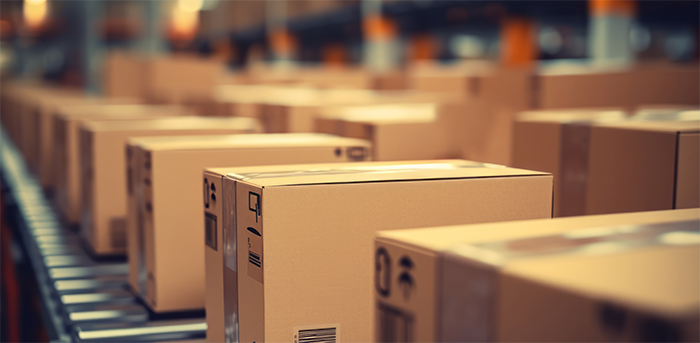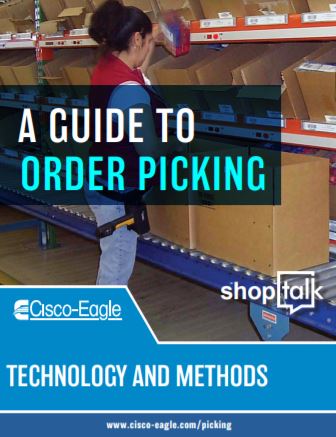Buffers, Conveyors, Robotics and Automation: What Works, What Doesn’t
Can systems balance queues and maintain flexibility?

Most every manufacturing or distribution facility builds in storage and handling buffers – and for good reason. Buffers hold product or processes when work flow isn’t balanced. For instance, a conveyor buffer may exist between picking and packing operations. This allows picking to continue even if the packing, quality control or shipping departments are backed up. Buffers maintain balance between functions and ensure continuity.
Are queues and buffering wasteful?
From an abstract point of view, where systems run reliably at a defined rate, lean experts argue that queues and buffers are wasteful. If you know your flow rates, order volumes and other variables, it should be possible to engineer a system that flows constantly and predictably. The concept is appealing because that queue space has costs: for equipment, energy requirements and space.
But in reality, rates aren’t always the consistent and may never be. Demand varies, by day, month or season.
Order spikes can happen for unforeseeable reasons. If your handling system, whether AMRs, conveyors, or AGVs cannot handle both peak and low demand windows, it’s very difficult to operate. If key personnel are absent, if there are mechanical issues with automation equipment, it is not practical to stop everything up and downstream from that part of a system.
Conveyor system buffer types
- Accumulation Buffers: When flow must be interrupted downstream, accumulation systems hold products on the conveyor without allowing them to make damaging contact with each other, either by preventing contact or ensuring that the contact is minimal. For operations that require more buffer space, vertical spirals are often deployed, while others run lines on the floor or overhead.
- Merge Buffers: Merge buffers combine multiple conveyor lanes into a single lane, creating a smooth transition of items from one conveyor to another. Merge buffers are frequently deployed in higher volume distribution operations.
- Sortation Buffers: These buffers are used in sorting systems to temporarily hold items before they are directed to the appropriate chute or conveyor lane based on their destination.
Read more: How to Design and Utilize Storage Buffers
Buffers are both functional and costly
Everyone hates lines, but can you design a system that eliminates them? Automated systems almost always have physical buffers baked in to absorb imbalances. Is your system immune to those imbalances? At very least, it’s possible to model and engineer a system that minimizes queues, even if it cannot eliminate them.
- In a purely lean scenario, variations in flow and dependencies on downstream functions shouldn’t exist. In a progressive assembly line, a dead robotic cell will disrupt everything before and everything after it. In distribution, if the shipping area is compromised, should that shut down packing or picking?
- Customer service should be the first filter when these decisions are made. If your system can take the short term shock of variations, it can deliver despite issues at any point in the process. It’s better to have paid for the “waste” of an accumulation or storage buffer than to sabotage service.
- If your product is in demand, is it really wasteful to build in contingency queues to ensure you’re “mostly”, if not entirely operational when there are issues or spikes?
- Labor continuity must be considered. Many operations use buffers in shift work, where picking can take place overnight and queue for packing in the morning, without needing to staff both functions for three shifts. Picked orders can await the packing operation when they arrive rather than having smaller shifts for both functions working at the same time.
Above: lines are naturally inefficient, but can your system be designed to minimize wait time and maximize flow while still allowing maximum flexibility?
Buffering and transport systems
One of the ways to reduce buffer space and time is to utilize AMRs or AGVs rather than conveying systems. In the right scenarios, this can work, but it’s a careful balance. Conveyor systems work best when volumes are higher and throughput faster. In this scenario, an AMR would deposit an SKU at a workstation or conveyor directly from storage. This can mean fewer robots needed to do the same work. This is a simpler system, that reduces queueing. Its viability depends entirely on your operational needs.
In some instances, conveyor lines and queues are less expensive, faster and more efficient. In others, robotics tends to hit that sweet spot between cost and throughput.
The case for continuous flow
Continuous workflow – the concept of never stopping, never buffering – makes a process more predictable and simpler. This alone should simplify management and increase responsiveness. Because queues and buffers stop production, they are by definition less efficient. This doesn’t necessarily mean that your buffer is inefficient, but it may at least be worth exploring.
If you’re waiting in line to enter a concert, is it faster for the gates to open for fifty people, then shut until those fifty are in their seats before another fifty are “batched” in? It depends on predictability. If those fifty people go to their seats quickly, certainly. If they stop for a drink or the restroom, then finally sit, efficiency starts to decline.
Ideally, a flow from point A to B without stopping seems more efficient, and may well be. Batches allow you more flexibility than continuous flow. In the concert example above, if you open the gates and allow all concertgoers inside as quickly as they can clear the door – basically a continuous flow – it may be more efficient because there are multiple possible destinations. Many of those destinations have queues of their own to reflect limited capacity at restrooms, merchandise lines and concessions. In a distribution center, if you can eliminate the queues at each sub-destination, or your system doesn’t offer multiple destinations, continuous flow may make more sense.
The idea for continuous flow systems is simple: they streamline operations and shorten processing – if all things remain predictable and equal.
Read more: Accumulation Conveyor: How to Choose Zero or Minimum Pressure
Download the Cisco-Eagle guide to order picking
When it comes to picking orders, you have many options: equipment types, methods, technologies and more. Download our guide to order picking to read tips and articles from our expert employee-owners. You’ll find practical examples of ways to cope with ergonomics, slow movers, various picking systems and much more.
Download the guide today
Tags: Space Optimization, order fulfillment, ROI, conveyor design
Scott Stone is Cisco-Eagle's Vice President of Marketing with 35 years of experience in material handling, warehousing and industrial operations. His work is published in multiple industry journals an websites on a variety of warehousing topics. He writes about automation, warehousing, safety, manufacturing and other areas of concern for industrial operations and those who operate them.





